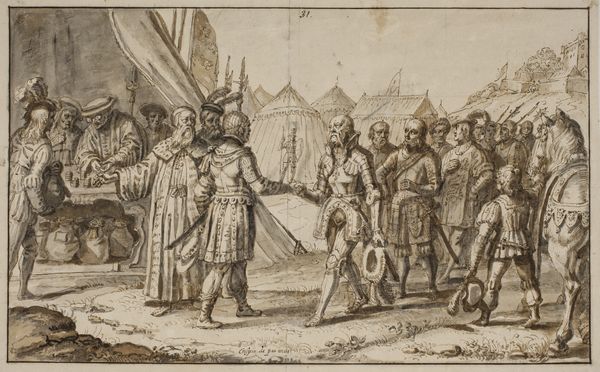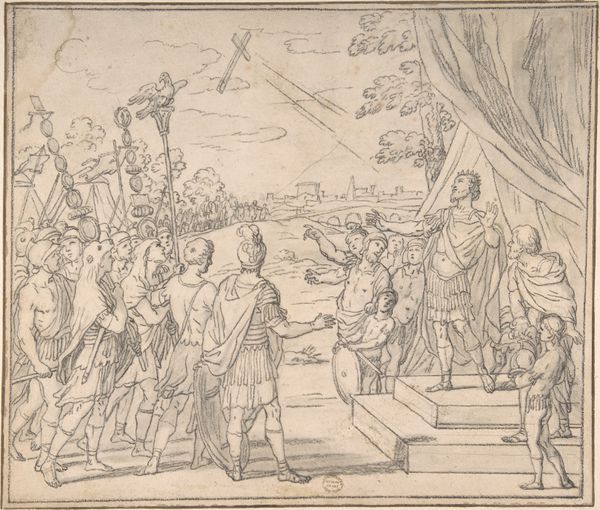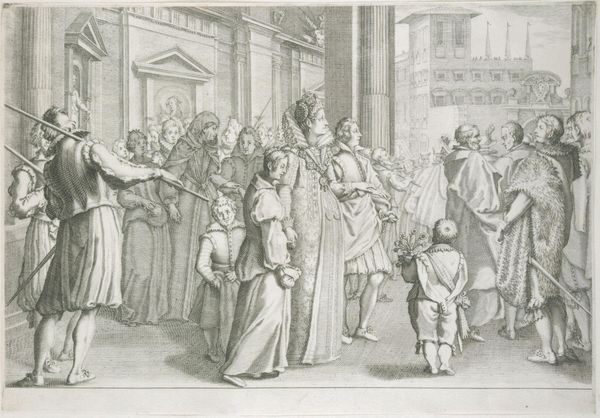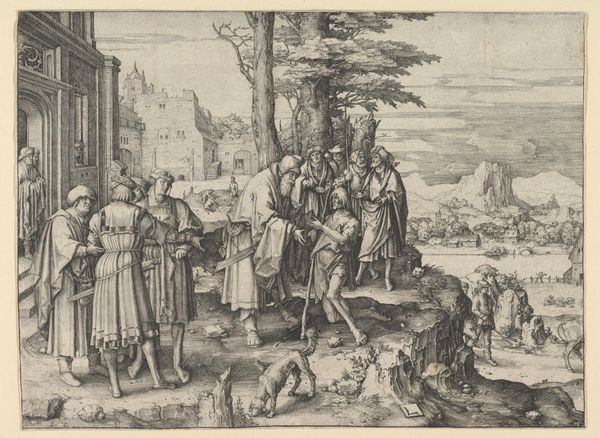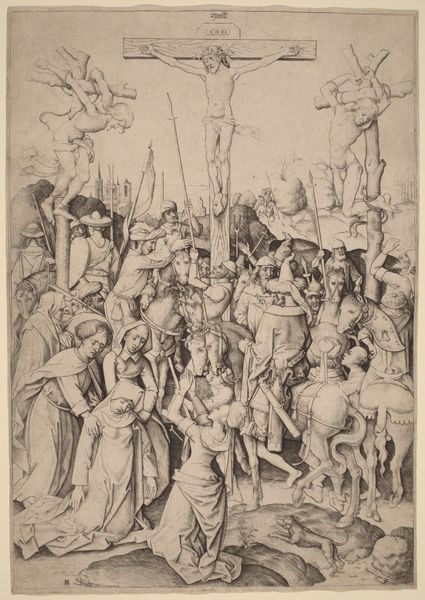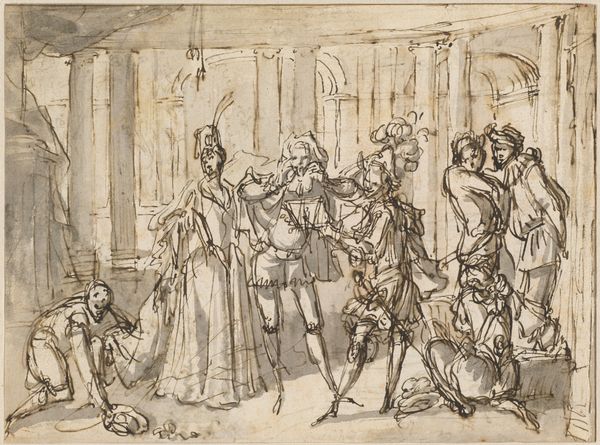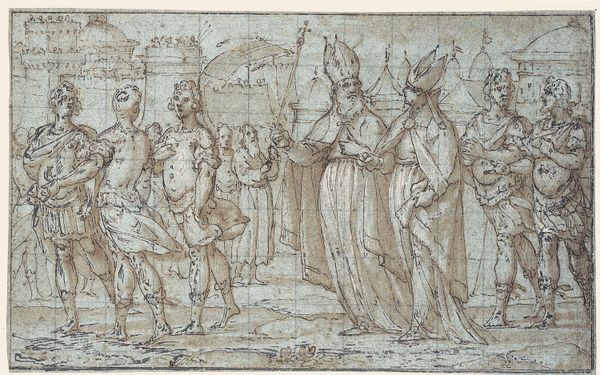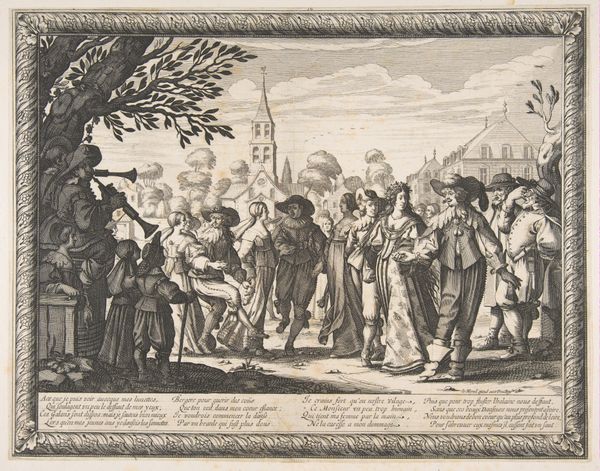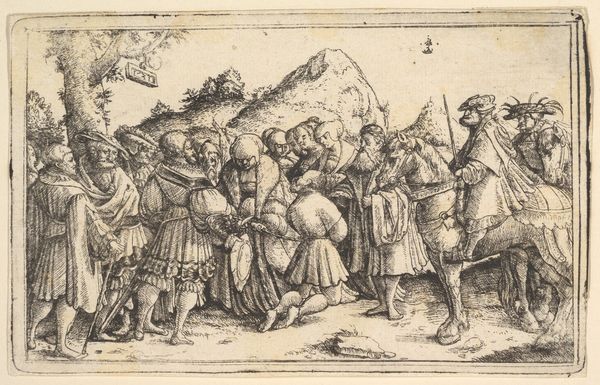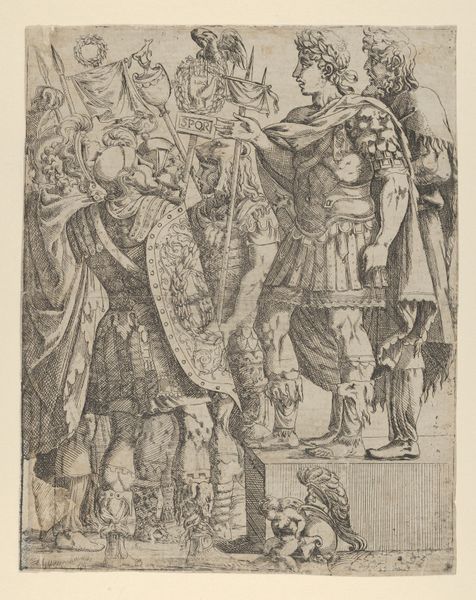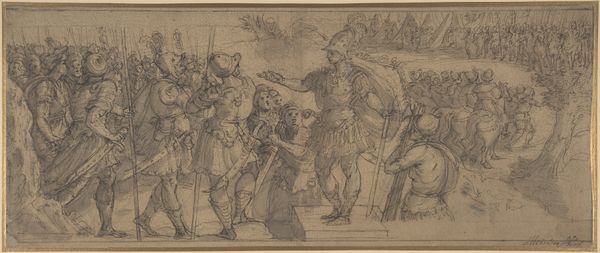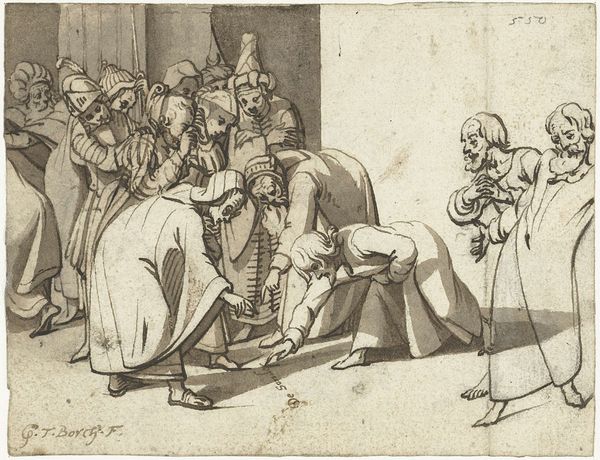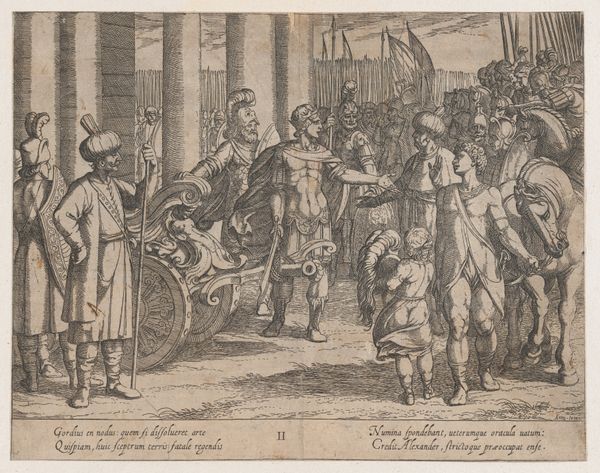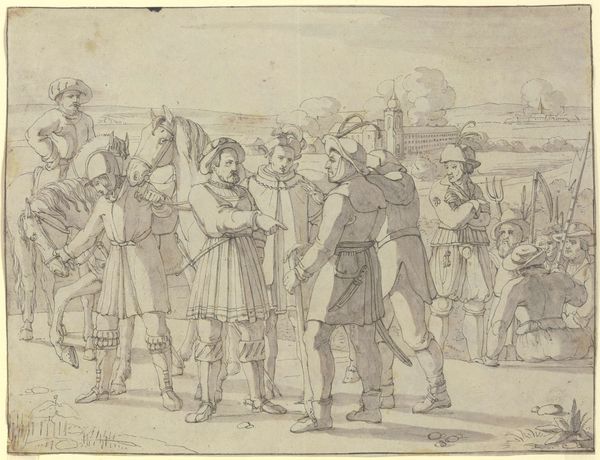
Otto von Wittelsbach Liberates the Army from a Mountain Pass near Verona 1560 - 1628
0:00
0:00
drawing, ink
#
drawing
#
landscape
#
mannerism
#
figuration
#
ink
#
line
#
history-painting
Dimensions: sheet: 5 11/16 x 10 9/16 in. (14.5 x 26.8 cm)
Copyright: Public Domain
Editor: This is "Otto von Wittelsbach Liberates the Army from a Mountain Pass near Verona," an ink drawing made by Peter Candid sometime between 1560 and 1628. The line work creates this slightly chaotic scene; there are figures everywhere! What visual clues stand out to you? Curator: Immediately, I see the layered effect created by the mountains and the advancing army. It speaks to the overwhelming power dynamics at play in historical narratives. Note how Candid uses linear perspective to guide our eyes from the defined foreground figures into the almost ghostlike retreating army depicted far in the background, seemingly caught mid-retreat within a fortified mountain pass. This visual choice represents cultural memory, as the act of "liberating" can shift depending on whose story is being told and by whom. Editor: You make it sound like liberation is a flexible term! The clothing of the central figures is quite eye-catching. Is there significance to what they are wearing? Curator: Precisely. The elaborate armor and feathered helmets are not merely decorative; they visually signify authority and power, key iconography in the construction of leadership, a signal not only of wealth but of readiness for conflict. Notice how Candid painstakingly renders this detail in the primary figures, contrasted by the rough sketch work of those in retreat, creating a clear visual hierarchy of who the intended hero is versus the chaotic mob escaping peril. Who would you assume this work to have been commissioned by and for? Editor: Hmm, someone hoping to connect themselves to ideas of heroism and leadership, perhaps? Is that why Otto is so prominently placed, liberating those who would likely not have escaped otherwise? Curator: Indeed. Consider the title. It carefully frames Otto’s actions in the best possible light. This isn’t just an image; it's a meticulously constructed piece of political iconography designed to shape historical memory through powerful visual cues. This approach leaves the viewer considering which army truly requires liberation. Editor: I hadn’t considered it in such depth. Seeing the deliberate choices in imagery and their persuasive possibilities makes me look at historical art in an entirely new way!
Comments
No comments
Be the first to comment and join the conversation on the ultimate creative platform.
